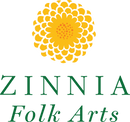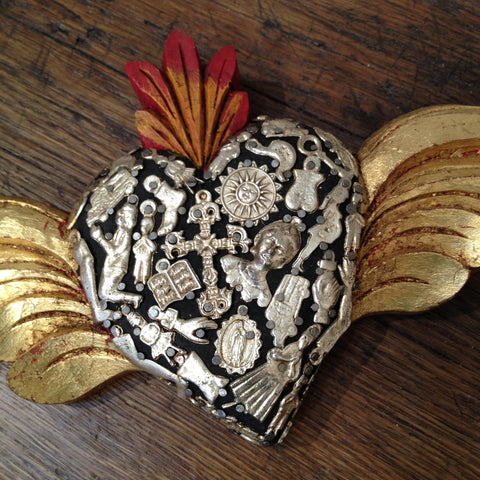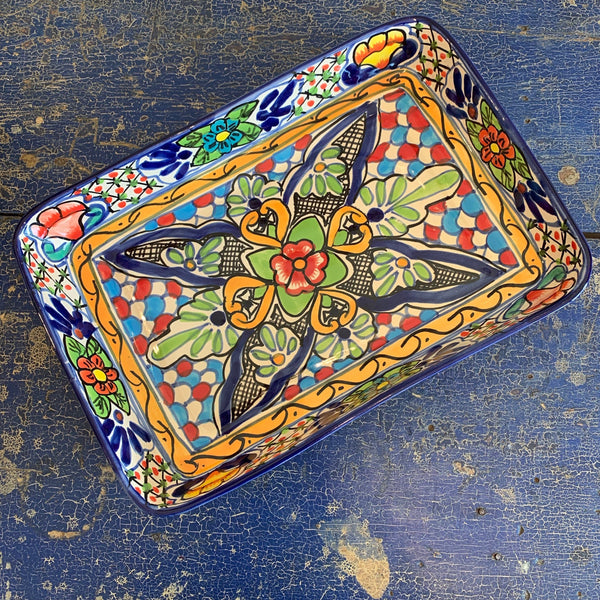This article was written by Marianne Carlson of the Feria Maestros del Arte held every year in mid-November in Ajijic, Mexico. This is one of the premier folk art fairs of Mexico and is definitely worth the trip!
Shop our collection of milagro hearts
"Milagros are small metal religious charms. The word milagro means “miracle”. In the not too distant past, these small charms, often depicting arms, legs, praying people, farm animals and a wide range of other subjects were typically nailed or pinned to crosses or wooden statues of various saints like the Virgin Mary or Christ, sacred objects, pinned on the clothing of saint statues, or hung with little red ribbons or threads from altars and shrines. They are also carried for protection and good luck.
Ranging in size from less than 1/2 inch to several inches, they are as unique as the cultures that produce them.
In Mexico, the use of milagros is connected with an institution known as the manda. This where a person will ask a favor a saint, and then, in order to repay the saint after the favor has been granted, one must make a pilgrimage to the shrine of that saint, and take a milagro and leave it there. These milagros are typically pinned to some object of devotion in the shrine, and often a small prayer of thanks is added, written of a piece of paper.
People also might carry a milagro with them in order to get its benefit. For instance, a curandera - a spiritual healer - might bless a milagro and recommend that the person carry it in her pocketbook or on her person, in order to cure a physical ailment or to ward off evil, or bring about a change of fortune.
Typical milagros commonly found and their potential meanings
(always up for individual interpretation):
Hearts, sacred hearts, hearts with swords: These can represent the human heart, and it might be connected with cares of worries over a heart condition, or the love that one person feels for another.
Eyes, double eyes, glasses: The milagro of the eyes is often connected with the popular Mexican saint Santa Lucia, who is depicted with a tray with two eyes on it. The eyes can also represent the concept of watching. One practice is to attach the milagro to the frame of the image of a deceased person, in the belief that this might represent the concept that the spirit of that person is watching over us, and helping to defend us from spirits from the land of the dead, or pleading our case before the saints and the angels.
Body parts (lungs, ears, kidneys, etc.): Various body parts, such as kidneys, livers, lungs, ears, noses, breasts, lips/mouth as well as the better known arms and legs are usually used when asking for help with a particular ailment of the identified part.
Praying female or male figures: This popular milagro can represent a man or woman, such as a mother, wife, father, husband, or any other man or woman who is perceived as being faithful and fervent, or it might represent the prayers of a man or woman. It can also represent any female or male saint.
Woman or man’s head: A milagro of the head might represent the man or woman’s mind, spirit, or a condition such a headache.
Young girls or boys: This milagro might represent a male or female child, or a niece or nephew, a grandchild, or any other child. It might also represent the childlike qualities in anyone.
Arms: The milagro of the arm might represent an arm itself, and some condition associated with it. It could also represent one’s strength, one’s ability to work. It might represent an embrace, and physical demonstrations of affection that involve embracing.
Legs and feet: This might represent one’s leg and some condition associated with it, such as an injury, or arthritic condition. It might also represent one’s strength, and the concept of travel, such as, not only walking, but a journey, or even the idea that one might be safe driving back and forth from work every day.
Houses represent, normally, one’s own home, and the blessings that might be made on it, and on the family that dwells there. It can also represent the hope of having one’s home, or it can represent someone else’s home. It might also represent one’s workplace, or school. When traveling, it can be a charm to insure that one will arrive safely home again, or it can establish a connection between the traveler and the loved ones at home.
Hens, roosters and chickens: The hen is actually a very powerful symbol, as are all of the animal milagros. This one might represent one’s own hen, seeking blessings so that she might always lay good eggs. Or, it might symbolize human qualities like those of a mother hen - the concept of mothering.
Bulls, cows: The bull might symbolize strength, husbanding, protection, stamina, endurance. Horses: The horse might symbolize the qualities of a man in being a workhorse, or travel, and be involved in a prayer about a journey.
Mules, like the horse, might symbolize the qualities of a man in being a workhorse - being able to "work like a mule" - or it might symbolize travel, and be involved in a prayer about a journey. It might also be involved in a prayer or a charm to overcome stubbornness, in either in oneself or in another.
Sheep, lambs, goats: The sheep could symbolize any of the Bible verses about sheep. It could also symbolize the concept of togetherness, the fealty one feels for one’s groups, or family. It might also be used a charm to try and erase the effects of behavior that is typically described in a negative way as being like that of a sheep - such as giving into peer pressure with negative results, or, say, the concern of a parent that her child may be involved with a harmful cult or some other group that one does not approve of.
Dogs: The family dog milagros could symbolize loyalty. It could also symbolize protection, such as what a sheep dog affords the herd.
Pigs: The pig could symbolize nourishment - "bringing home the bacon". It might also be used as a charm to try and erase the effects of behavior that is typically described in a negative way as being like that of a pig, such as perceived lack of control in ones eating habits. "


